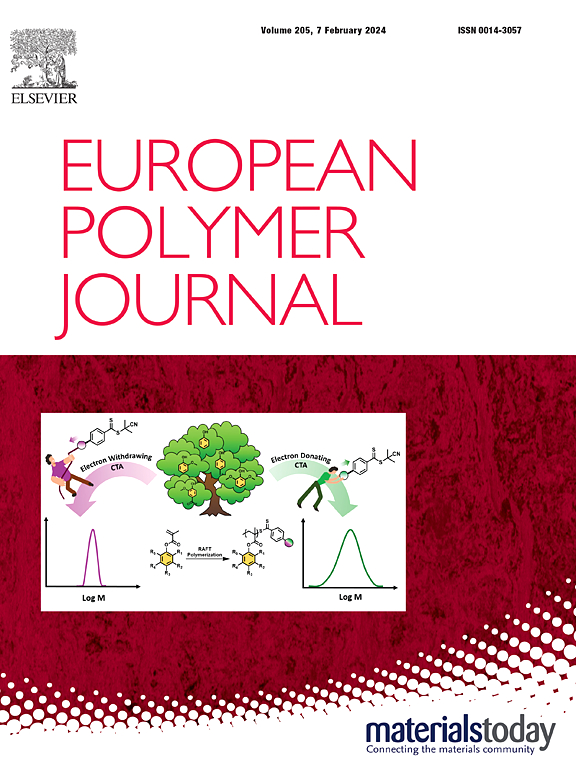Fabrication and biomedical applications of platinum-cellulose nanocomposites
IF 5.8
2区 化学
Q1 POLYMER SCIENCE
引用次数: 0
Abstract
Cellulose acetate-based nanocomposites represent a promising platform for developing advanced antibacterial materials with potential biomedical applications. Staphylococcus aureus, a leading cause of skin infections, poses a significant challenge due to its resistance to conventional treatments. Therefore, searching for biocompatible materials with enhanced antibacterial activity remains essential.
Here, we show that Pt-cellulose acetate nanocomposites exhibit remarkable antibacterial activity against Staphylococcus aureus, resulting from the integration of approximately 250 nm platinum nanoparticles into the polymer matrix. These composites demonstrate bacteriostatic and anti-adhesive properties while maintaining low toxicity to fibroblast cells.
Furthermore, the Pt-modified nanocomposites exhibit excellent mechanical and thermal properties, as well as increased hydrophilicity. The slight enhancement in thermal stability and hardness improvements can be attributed to optimal nanoparticle density in the nanocomposite. The gradual release of platinum ions (<160 µg/cm2) ensures sustained antibacterial efficacy.
These findings underscore the crucial role of metallic nanoparticles in altering the nanocomposite characteristics.

求助全文
约1分钟内获得全文
求助全文
来源期刊

European Polymer Journal
化学-高分子科学
CiteScore
9.90
自引率
10.00%
发文量
691
审稿时长
23 days
期刊介绍:
European Polymer Journal is dedicated to publishing work on fundamental and applied polymer chemistry and macromolecular materials. The journal covers all aspects of polymer synthesis, including polymerization mechanisms and chemical functional transformations, with a focus on novel polymers and the relationships between molecular structure and polymer properties. In addition, we welcome submissions on bio-based or renewable polymers, stimuli-responsive systems and polymer bio-hybrids. European Polymer Journal also publishes research on the biomedical application of polymers, including drug delivery and regenerative medicine. The main scope is covered but not limited to the following core research areas:
Polymer synthesis and functionalization
• Novel synthetic routes for polymerization, functional modification, controlled/living polymerization and precision polymers.
Stimuli-responsive polymers
• Including shape memory and self-healing polymers.
Supramolecular polymers and self-assembly
• Molecular recognition and higher order polymer structures.
Renewable and sustainable polymers
• Bio-based, biodegradable and anti-microbial polymers and polymeric bio-nanocomposites.
Polymers at interfaces and surfaces
• Chemistry and engineering of surfaces with biological relevance, including patterning, antifouling polymers and polymers for membrane applications.
Biomedical applications and nanomedicine
• Polymers for regenerative medicine, drug delivery molecular release and gene therapy
The scope of European Polymer Journal no longer includes Polymer Physics.
 求助内容:
求助内容: 应助结果提醒方式:
应助结果提醒方式:


